






Managing Director
Shankar Shivaprasad
Co-founder & CEO
Shashank M
Chief Editor
Ujal Nair
Assistant Editor
Kevin Thomas
Laura Edwards
Head of Operation
James
Head of Production
Tom Hanks
Head of Research
Catherine D’Souza
Head of Media Sales
John Smith
Advertising Contact Info@wboutlook.com
Content Managers
Sathya Narayana B
Madhulika Pandey
Amith Raj S
Business Developers
Daisy Cooper, Mark Cooper, Justin Wong, Elena Davis, Eric Thomson
Graphic Designer
Chandan R
Video Editor
C Gidieon Sam Issac
Accounts Manager
Steve Smith
Office Address
32 Pekin St #05-01
Singapore 048762
Phone: +65 86159608

In our earlier issue, we spoke about how 2024 might continue to be affected by the geopolitical conflicts in the Middle East and East European regions. This year is especially noteworthy because of the number of elections in around 100 countries or more worldwide, where nearly half of the world’s population –around 4 billion voters, are going to decide the fate of their respective countries. The highly anticipated electoral results in the world’s highest populated country, India, ended in favour of the previous governance. As for the elections in European countries, there have been some surprising results, such as the regime change in the UK and France. Another largest democracy, the USA is going to the polls by the end of this year. Also to be noted are the recent violent protests against the ruling party in Bangladesh which had won the election but was forced to step down. These global geopolitical events may be another game-changer in the economic landscape. From the supply chain perspective, this may prove to be a positive boost which remains to be seen in the coming months.
Recent supply chain trends suggest that the global manufacturing hub is slowly shifting from the longtime manufacturing leader China to its regional counterpart and competitor, India, and some Southeast Asian countries like Vietnam. This is evident from a surge in the export volumes of smartphones in these countries in 2023. Similarly, in the Americas, the US companies are shifting manufacturing bases to Canada and new markets such as Mexico. This comes as the America-China trade war gets even more complicated with the US imposing additional tariffs on Chinese goods.
Despite the geopolitical upheavals and turbulences in the developed markets and the tensions in the Middle East and East European regions, the global economy has remained mostly positive thanks to the stable and growing economies in the emerging markets. We have covered some interesting stories on companies in the fintech, technology, AI, Spacetech and energy sectors.
On the technology and business front, it will be interesting to see how companies worldwide will address key topics such as AI and sustainability. Remote work is another key focus area for businesses to consider due to the rising automation of work due to technology and AI. In this issue, we have a dedicated blog on the future of work and how technology is reshaping careers. B2B payments is another area where automation is empowering businesses by reducing costs, and delays, and thereby driving profits.
Rising AI Deepfakes are another area of concern. AI deepfake videos are a threat not just to individuals, but also businesses worldwide. However, this modern-day technological challenge also needs the intervention of technology to tackle it. We have covered news on how two of the major industry players have partnered to address the issue of AI deepfakes with the help of real-time, non-cloud-based analysis of videos to detect AI-generated content in them. Another noteworthy example where the power of AI is used to tackle the threat created by AI again is voice spam and scams. We have covered news about how a leading company has integrated an AI detection feature in its app which helps distinguish between AI and human voices.
In the end, we have some interesting blog articles on energy storage technology, strategies for businesses to navigate the turbulent global economy and how to protect themselves against devastating data losses, and decoding the consumer choices of Generation Alpha. We invite you to read these articles and share your valuable opinions on our social media handles.
Be sure to check out our website at www.worldbusinessoutlook.com



Connect with us on Facebook: www.facebook.com/WBOutook
Twitter : https://twitter.com/wboutlook
Instagram: https://instagram.com/wboutlook
LinkedIn: https://www.linkedin.com/company/world-business-outlook
YouTube: https://www.youtube.com/@worldbusinessoutlook908

Paystand announces the acquisition of Teampay





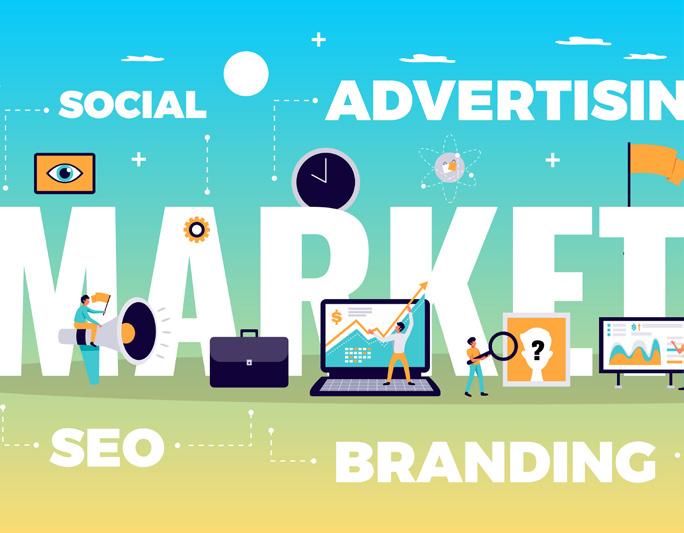







SUNRATE, an intelligent global payment and treasury management platform announced its partnership with YeePay, a leading enterprise payment solutions provider, to empower Chinese companies to expand into global markets.

With the ongoing trend of increased interconnectivity across the globe, China will continue to be an important player in global development, and Chinese enterprises are more than ever, playing crucial roles on the international stage. However, in order to better adapt to international competition and respond to global challenges, setting up and adherence to robust compliance frameworks have become the core competitiveness and inevitable requirement of international enterprises. Among the challenges, the compliance and security of cross-border B2B payments are major challenges that enterprises face in the process of internationalisation.
As the State Council unveiled the Regulations on the Supervision and Administration of Non-bank Payment Institutions (hereinafter referred to as the Regulations), which will take effect on May 1, 2024, YeePay and SUNRATE will actively embrace all regulatory requirements and help small and medium-sized enterprises (SMEs) to go global seamlessly – by building a compliant and secure one-stop global business payment solution, and assessing global growth opportunities.


Bin Tang, Founder and CEO at YeePay said, “The strategic cooperation between YeePay and SUNRATE will further enhance the compliance and security of cross-border payments. Both SUNRATE and YeePay will continuously strengthen risk management, protect user rights, and actively explore new cooperation models and services to provide Chinese enterprises expanding globally with secure, convenient, and cost-effective payment and transaction services. In addition, we hope to see more partners joining us, providing better transaction services for Chinese enterprises to expand globally.”
Paul Meng, Co-Founder at SUNRATE said, “For SUNRATE, security and compliance are the bedrock of our business operations. As we expand into different markets, SUNRATE maintains compliant operations locally, including in-depth collaboration with wellknown local financial institutions. We are pleased to have forged a strategic partnership with YeePay, which will allow both companies to work together, to create safer and more efficient global business payment and collection services for Chinese enterprises.”

Paystand, the global leader in blockchain-enabled B2B payments, yesterday announced the acquisition of Teampay, an industry-leading spend management software. The transaction creates a B2B payments powerhouse whose continued goal is to revolutionize payments by expanding the largest, fastest, and most cost-efficient B2B payments network.

The acquisition marks the next step in Paystand’s trajectory towards building an industry-wide decentralized finance (DeFi) network, once considered a pipe dream, capable of connecting buyers and suppliers at scale. This milestone, in combination with partnerships with NetSuite, Sage, and Microsoft Dynamics 365 Business Central, as well as the acquisition of the payment platform Yaydoo in 2022, represents a culmination of multiple years of payment innovation. The company and platform have been recognized by Deloitte, Juniper Research, Inc. Magazine, and most recently the FT 500 List of Fastest Growing Companies in the Americas.
The combined Paystand platform empowers CFOs to drive profitable behaviors among employees, vendors, and customers. Paystand brings its blockchainbased smart payments platform that helps finance departments speed up time-to-cash, reduce DSO, automate AR, and eliminate transaction fees. Teampay brings the ability to automate AP and corporate expense controls, eliminating inefficiencies. The combined company will help CFOs see direct contributions to profitability with quicker revenue and greater payment savings.
The acquisition of Teampay comes at a time marked by stagnation in fintech activity. The overall tech industry laid off 191,000 workers last year and 32,500 so far this year, according to Crunchbase. Meanwhile, the best tech companies are growing market share and consolidating a broader set of services for their customers.
“In a quiet fintech climate, this acquisition arrives with a bang,” said Jeremy Almond, Paystand CEO. “This brings Representational image
Paystand’s network of more than 800,000 companies with $10 billion in transactions—more than 1% of total U.S. account-to-account business payments—will be expanded by Teampay’s network of 250,000 companies, broadening the largest B2B payment network running on a commercial blockchain to more than 1 million business participants. The terms of the acquisition were not disclosed.

zero-fee blockchain payment technology further into the heart of the traditional finance technology stack. Paystand can leverage its blockchain infrastructure to enhance Teampay’s impressive expense and AP management capabilities. The results will be gamechanging – a truly next-gen, smart B2B payment network at scale that transforms the office of the CFO and brings radically better economics to businesses.”
The transaction was facilitated, in part, with financing provided by Stifel Venture Banking. Josh Dorsey, Managing Director at Stifel, emphasized the expansive growth opportunities within the B2B fintech sector. “The integration of Teampay into the Paystand ecosystem presents a compelling narrative for businesses aiming to adopt digital-first financial tools that enhance capital efficiency,” remarked Dorsey. “This acquisition represents a pivotal moment not only for Paystand and Teampay but also for the entire B2B payments industry. We are thrilled to support and be part of this transformative journey.”
While the fintech sector has been a hot industry in prior years, many of those startups were still built on legacy bank services, which simply mask the antiquated payment infrastructure that burdens businesses with high fees, intermediaries, and delays. This unique combination of Paystand’s strengths in payments and cash management with Teampay’s industryleading approach to expense and AP management will leverage the blockchain to sidestep existing payment rails.
“To realize our vision of a truly decentralized financial system, it is key that we not only are able to facilitate receiving payments but impact the payable side of those transactions as well,” said Almond. “In time, we are helping our users, and the industry as a whole, to lessen reliance on antiquated money movement methods.”
Paystand is now poised to offer businesses a comprehensive suite of solutions, offering a holistic approach that will streamline financial operations,
optimize cash flow, and provide valuable insights to drive business growth to bottom-line profitability. The suite enables:
• Digital payments
• Cash management
• Expense management
• A/R automation
• AP management
• Smart lockbox services
• Direct deposit management
“We are well on our way to a DeFi revolution – and it’s already happening without you realizing it,” said Almond. “You’re already a participant because if you do business in the U.S., you have likely worked with a company that makes transactions on the Paystand/ Teampay combined network.”




Representational image
Winona, the leading menopause telehealth company dedicated to transforming women’s health, announced the appointment of Dr. Cathleen Brown as its Medical Director. In her new role, Dr. Brown will serve as the spokesperson for the company and contribute regularly to the Winona Medical Journal, enriching the platform with her expertise in women’s health and menopause care.
With a profound dedication to women’s health education, Dr. Brown brings a wealth of experience and knowledge to her position. A native of Philadelphia, Pennsylvania, Dr. Brown is a distinguished, boardcertified OB/GYN who graduated from the Philadelphia College of Osteopathic Medicine in 2004. After completing her residency training at the Tripler Army Medical Center in Hawaii, she served honorably on various Army bases across the country for 12 years, providing essential care to female soldiers and dependents of active-duty soldiers.
“I feel incredibly privileged to be promoted to the role of Medical Director at Winona,” said Dr. Brown. “In this new role, I will be able to foster my lifelong dedication to educating my patients, while also furthering the company’s mission of revolutionizing women’s health.”

Dr. Brown’s commitment to advancing women’s health extends beyond clinical practice. She currently serves as the site director and obstetric hospitalist at Chester County Hospital in West Chester, PA. Additionally, Dr. Brown actively participates in hosting live Q&A sessions monthly for Winona, offering valuable information about menopause symptoms and treatment options. She also co-moderates the Winona Women’s Facebook Group, a vibrant online community with more than 10,000 engaged members that provides a safe space for women to share experiences and seek support.
“Dr. Brown has been with Winona longer than any other prescribing physician, apart from myself,” said Dr. Michael Green, Chief Medical Officer of Winona. “She is a great educator, a fantastic physician, and an amazing human being. I am very excited about her new role as Medical Director – I know she will do a fantastic job!”
Winona is dedicated to providing comprehensive support to women experiencing menopause-related symptoms through bioidentical hormone replacement therapy (HRT), personalized patient care, free monthly Q&As with their physicians, and a supportive community of peers.
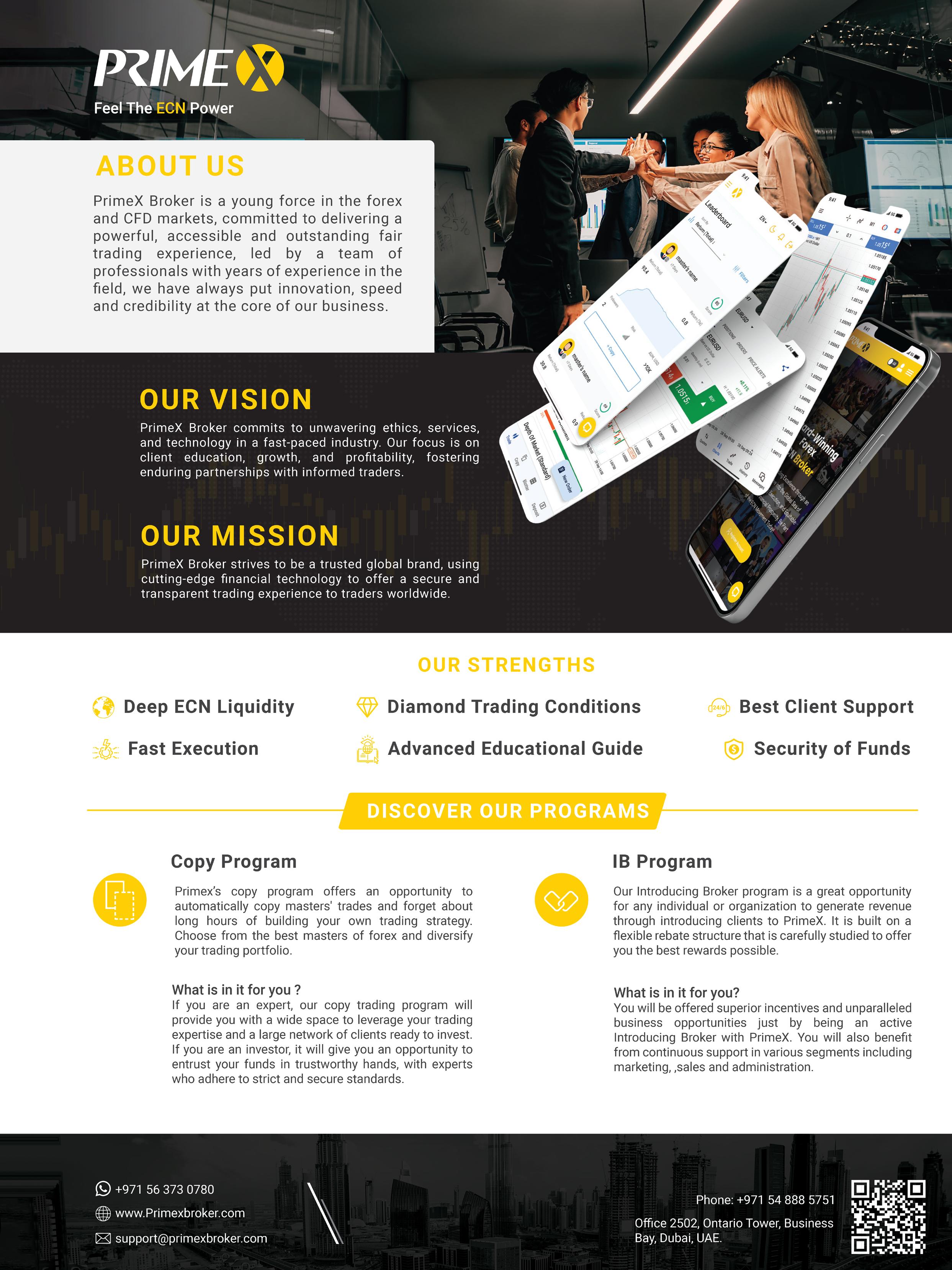



Triton Environmental, Inc. (“Triton”), a full-service environmental consulting firm, and Triton Coastal Consultants, LLC, its subsidiary, recently announced that it has joined True Environmental, Inc. (“True”), a platform focused on collaborating with founder and employeeowned environmental consulting and engineering firms
Representational image

to provide capital solutions to accelerate growth and facilitate seamless ownership transitions. The union further enhances True’s mission of building a best-inclass platform in the environmental consulting and engineering industry.
The founder of Triton, Chris Marchesi (who will remain with True during a transition period as Triton’s CEO), has expressed his enthusiasm for the company’s partnership with True Environmental, stating “Today marks a significant milestone in Triton’s continued evolution. The partnership is aimed at investing in Triton’s talented and dedicated people, with the goal of better serving clients. True Environmental is a group that shares Triton’s values, respects our culture, and is committed to supporting our clients.”
Carver Glezen, Triton’s new President, also expressed his excitement about the partnership. Glezen said, “The infusion of expertise and capability from True Environmental will greatly strengthen and expand Triton’s service offerings and resources available to clients. By investing in its people and partnering with a group that shares its values, Triton is well-positioned to continue its evolution and better serve its clients.”
“Triton has established an excellent company that focuses on engaging its employees and providing exceptional client service to both private and public sectors in the Northeast region. We are excited to collaborate with Triton’s management, including Chris, Carver, Paul Simonetta, Steve Benben, and Rob MacDuff and the rest of Triton’s team, to consistently deliver top-notch solutions that address their clients’ intricate environmental problems,” stated Jim Stamatis, the CEO of True Environmental.
“We are excited to announce our partnership with the Triton team, which complements and enhances True Environmental’s capabilities in serving clients. We are fortunate to have a highly experienced management team at True who will be valuable partners in helping the Triton team achieve its long-term goals,” said Jay Abramson, Senior Partner at Halle Capital.


McAfee, a global leader in online protection, today announced at RSA San Francisco, enhancements to its AI-powered deepfake detection technology leveraging the power of the NPU in Intel® Core™ Ultra processorbased PCs.
The advanced AI-powered technology that underpins McAfee® Deepfake Detector (previously known as ‘Project Mockingbird’) made its debut earlier this year amidst consumers’ growing concern for identifying deepfake scams and misinformation. In fact, nearly two-thirds (64%)1 of people globally are feeling more concerned about deepfakes now than they were a year ago. Today’s announcement with Intel underscores McAfee’s commitment to delivering innovative and powerful online protection solutions that empower consumers to live their lives online with confidence.
The McAfee and Intel collaboration addresses a significant consumer and societal need by helping people discern truth from fiction. Cybercriminals today often use AI to manipulate the audio on a video to create convincing deepfake scams. McAfee Deepfake Detector uses advanced AI detection techniques including transformer-based Deep Neural Network models expertly trained to detect and notify customers when audio in a video is likely generated or manipulated by AI. McAfee is demonstrating at RSA the significant performance and privacy improvements available when harnessing Intel’s AI PC technology.
Leveraging Intel Core Ultra processor’s NPU, McAfee’s AI models complete inference (the analysis and detection of a deepfake) locally, without needing to send private user information to the cloud. McAfee has measured as much as a 300% performance improvement on the
same model by leveraging the NPU. This enhanced performance, combined with the privacy advantages of local model execution, and improved battery life, provides substantial benefits to the customer.
“The collaboration with Intel is further evidence of McAfee’s innovative, customer-centric approach. In a world where seeing is no longer believing, where AI-generated deepfakes have made it harder than ever to tell real from fake, consumers need the latest in AI to beat AI,” said Steve Grobman, McAfee’s Chief Technology Officer. “With Intel, we’re now going even one step further in delivering a seamless and robust customer experience. Leveraging Intel’s Core Ultra processor technology and its NPU, we can provide consumers with the most advanced and powerful generative AI deepfake detection capabilities, without compromising on performance or privacy. No need to send huge files to the cloud for analysis with detection performed locally, providing even greater peace of mind and control over your data.”
“Our partnership with industry leaders like McAfee highlights our commitment to enabling the technology ecosystem to use AI for good,” said Carla Rodríguez, Vice President and General Manager of Ecosystem Partner Enabling at Intel. “We’re excited to collaborate with McAfee to help bring to market innovative solutions like McAfee Deepfake Detector which leverages the NPU in Intel Core Ultra processor-based PCs, driving detection of malicious and misleading deepfakes, while delivering optimal performance and privacy.”



AT&T and AST SpaceMobile enter a commercial agreement to provide their first space-based broadband network direct to everyday cell phones.
Key Takeaways:
AT&T and AST SpaceMobile announce a commercial agreement to provide their first space-based broadband network direct to everyday cell phones. The two companies have been on this path together since 2018. This agreement is another key step to providing even more expansive connectivity. AT&T* and AST SpaceMobile have entered a definitive commercial agreement to provide a space-based broadband network direct to everyday cell phones. This agreement extends until 2030. Previously the companies were working together under a Memorandum of Understanding. This is not just one small step, but
one giant leap towards enhanced connectivity for consumers and businesses across the country.
This summer, AST SpaceMobile plans to deliver its first commercial satellites to Cape Canaveral for launch into low Earth orbit. These initial five satellites will enable commercial service that was previously demonstrated with several key milestones. These industry first moments during 2023 include the first voice call, text and video call via space between everyday smartphones.
The two companies have been on this path together since 2018. AT&T will continue to be a critical collaborator in this innovative connectivity solution. Chris Sambar, Head of Network for AT&T, will soon be appointed to AST SpaceMobile’s board of directors. AT&T will continue to work directly with AST SpaceMobile on developing,


testing, and troubleshooting this technology to help make continental U.S. satellite coverage possible.
“Space-based direct-to-mobile technology is designed to provide customers connectivity by complementing and integrating with our existing mobile network,” said Jeff McElfresh, Chief Operating Officer, AT&T. “This agreement is the next step in our industry leadership to use emerging satellite technologies to provide services to consumers and in locations where connectivity was not previously feasible.”
“Working together with AT&T has paved the way to unlock the potential of space-based cellular broadband directly to everyday smartphones. We are thrilled to solidify our collaboration through this landmark agreement,” said Abel Avellan, AST
Representational image
SpaceMobile Founder, Chairman, and CEO. “We aim to bring seamless, reliable service to consumers and businesses across the continental U.S., transforming the way people connect and access information.”
This is another key step on AT&T’s path to providing even more expansive connectivity on America’s largest wireless network1. There are many situations where dead zones outside will become a thing of the past thanks to the reach of a satellite solution providing two-way connectivity.
One day in the not-too-distant future, consumers will feel a greater peace of mind knowing they have connectivity in places like wilderness areas, including our national parkland, rural highways, and other hard to reach locations around the country.
Oklo Inc. (NYSE: OKLO), a fast-fission clean power technology and nuclear fuel recycling company, announced its collaboration with Wyoming Hyperscale to supply 100 megawatts of clean power to a stateof-the-art data center campus. The companies have signed a non-binding letter of intent outlining their intent to enter into a 20-year Power Purchase Agreement, highlighting Oklo’s commitment to providing reliable and scalable clean power solutions in response to the increasing demand for electricity driven by global digitalization and artificial intelligence (AI) adoption.

“As the widespread adoption of artificial intelligence increases, Oklo remains dedicated to providing clean, reliable, and affordable energy solutions to meet the needs of our data center partners. Our partnership with Wyoming Hyperscale underscores our commitment to advancing sustainable energy practices and supporting high-efficiency operations within the data center industry,” said Jacob DeWitte, co-founder and CEO of Oklo.
Trenton Thornock, Founder and Managing Member of Wyoming Hyperscale, emphasized the project’s commitment to reimagining traditional data center development practices. “Our goal is to create data centers with minimal environmental impact. This collaboration with Oklo perfectly aligns with our vision for sustainable, efficient operations. By merging sustainability with advanced technology, we are setting a new standard for the future of accelerated computing.”



image


Amagi, one of the leaders in cloud-based SaaS technology for broadcast and connected TV (CTV), deployed on Amazon Web Services (AWS), yesterday announced its partnership with Malaysia’s leading media and entertainment company – Astro Malaysia Holdings Berhad (Astro).

Astro, Malaysia’s leading content and entertainment company, in partnership with Amagi, is modernizing systems and infrastructure for the playout and origination of its existing Linear Channels and Playout Disaster Recovery capabilities and transitioning them to AWS, the world’s most comprehensive and broadly adopted cloud. This marks a milestone in ASEAN’s broadcast industry. The Amagi playout deployment will help Astro optimize its media operations, enhance business agility, increase service resilience, and mitigate the risks of maintaining legacy systems.
The upcoming launch of the AWS Asia Pacific (Malaysia) Region complements Astro’s ongoing broadcast transformation journey, which aims to further enable the deployment of innovative media and entertainment solutions. By capitalizing on the robust cloud infrastructure, unparalleled scalability, and advanced services provided by AWS, Astro aims to further improve enhanced in-country network infrastructure resiliency and performance, thus delivering enriched customer experiences.
Broadcasters have traditionally managed their channel automation and playout systems within on-premises data centers. As Astro continues its expansion across multiple regions, the organization will see workflows being optimized, media operations enhanced, and playout system management streamlined. To further complement the company’s pursuit of these goals, Astro will implement Amagi’s flagship products on AWS: the Amagi CLOUDPORT channel playout platform and the Amagi MONITORING solution. These advanced solutions will support Astro’s commitment to operational excellence, offering enhanced resiliency and enabling quicker upgrades to service capabilities, thereby meeting the evolving needs of the broadcasting landscape.
Mauro Di Pietro Paolo, Chief Technology Officer at Astro said, “As Malaysia’s leading broadcaster, Astro continues to drive innovation, and our partnership
with Amagi underscores our continuous dedication to pioneering advancements in the industry. At Astro, we needed a playout platform that would align with our vision for transformation in our broadcast and media operations, have in-built disaster recovery capabilities, and provide a modernization path for our end-of-life on-premises systems. We’ve selected Amagi because of their proven track record of deploying playout systems on AWS and have demonstrated their ability to be a transformational platform.”
Srinivasan KA, Co-Founder and Chief Revenue Officer at Amagi said, “We are delighted to partner with Astro, one of the most innovative and forward-looking media companies in Asia, to help them achieve their cloud transformation goals. By leveraging our cloudnative solutions built on AWS’s global infrastructure, we can provide Astro with a scalable, secure, and costeffective playout platform to support their current and future needs. This collaboration also demonstrates our commitment to empowering media companies with cutting-edge cloud technology and best-in-class service.”
“The broadcast industry is rapidly changing, requiring broadcasters to stay competitive with increased agility, resiliency, cost efficiency, and unified workflows, which can be achieved with AWS cloud. AWS is proud to work with solutions providers like Amagi to drive the industry forward,” said Pete Murray, Country Manager at AWS. “We’re thrilled to see our long-term customer Astro continue its transformative journey to delight their customers, and with Amagi, we look forward to digitalizing and advancing the future of Malaysia’s media and entertainment industry.”
Amagi and Astro launched broadcast station playout origination on AWS for the first channels and disaster recovery services in May 2024. This marks the first largescale, cloud-based playout solution by a broadcaster in Malaysia. To meet the ever-changing needs of these networks, Amagi will continue to work closely with Astro to scale and evolve its Amagi CLOUDPORT solution.



APOLLO, a Canadian digital insurance provider and leading innovator in the emerging embedded finance sector, announced the creation and launch of FinShore, a wholly owned buy-now-pay-later subsidiary. FinShore provides a fully embedded monthly payment option to over 100,000 Canadians insured with APOLLO.
The financing for the new company was provided by Fair Capital Partners Inc. (“FairCap”) as lead arranger and agent and Innovation Federal Credit Union (“IFCU”) as lender. PricewaterhouseCoopers Corporate Finance Debt & Capital Advisory (“PwC CF”) acted as exclusive financial advisor to APOLLO and FinShore.
FinShore will allow Canadians, and particularly renters, to take advantage of a buy-now-pay-later facility for their insurance premiums. It will also support APOLLO’s cohort of insurance broker partners who use the APOLLO platform to transact insurance business on behalf of their clients.
“Establishing FinShore is an innovative step forward for APOLLO, and will do much to make the lives of Canadian renters easier,” said APOLLO CEO Jeff McCann. “In this economic climate, particularly with the rise of renting across Canada, consumers are looking for flexibility in their payment options. Thanks to our partners at FairCap, IFCU, and PwC CF, we are able to offer that to them.”
APOLLO’s digital platform launched in 2019, and began serving Canadian consumers with fully digital insurance products. Since then, APOLLO has partnered with property management companies, proptechs, insurance brokers, and other organizations to embed insurance products into their existing workflows. For property managers, the insurance purchase experience is embedded directly into the leasing workflow. Some of APOLLO’s partners include QuadReal, InterRent, and Yardi Systems.
“Both FairCap and IFCU are excited about this opportunity, and look forward to building a long-term relationship with APOLLO and FinShore,” said Daniel Nanson, FairCap CEO. “This venture aligns well with our mission to empower the North American lower middle market with fair, intelligent capital solutions.”


Truecaller, a world-leading global communications platform, announced the latest launch of spam and scam fighting abilities: the AI Call Scanner. AI Call Scanner is trained to detect and differentiate between human and AI-synthesized voices, empowering people to safeguard themselves against potential scams and fraudulent activities.
The AI Call Scanner is built right into the Truecaller Android app, is part of the Premium subscription and is being rolled out in the US first, with plans to launch globally. The system is designed with simplicity and effectiveness in mind. If a person receives a suspicious call, all they have to do is tap a dedicated button within the Truecaller interface. The caller’s voice is recorded and this voice sample is then processed by
our advanced AI model, which has been rigorously trained to identify the unique characteristics of human speech and distinguish it from AI-generated voices. All this happens in just a few seconds and we are proud to launch with a high degree of accuracy.
“The risks of AI voice scams are increasing due to the proliferation of AI voice synthesisers. Our goal was to find an effective and reliable solution before things got out of hand. I am proud to announce that Truecaller is the world’s calling app with AI voice detection built in. Truecaller already uses AI in many different ways and this was a logical and much-needed extension of Truecaller’s scam fighting abilities,“ said Alan Mamedi, CEO and Co-founder at Truecaller.



While AI Call Scanner is launching on Android first, we are already exploring avenues for further improvement and expansion, including an imminent iOS launch. Our team is actively researching ways to refine the AI model’s accuracy, reduce response times, and adapt to emerging trends in voice synthesis technology. Additionally, we are considering the potential integration of AI Call Scanner with other communication platforms and devices to extend its reach and impact; for example, building a chatbot where people can forward recorded clips for detection.

We have heard the expression “The Future is Technology” in many contexts throughout our lives. However, what does it mean? The way technology has evolved has had a miraculous effect on every field it has touched. The workplace has undergone a revolution due to this rapid growth, which has created opportunities for people everywhere. This blog will shed light on how technology is reshaping careers and its impact on the future of work.
We have personally experienced the advancement of technology, especially in our jobs. Consider the technology stack we were using five, ten, or even 20 years ago. Since then, we have changed our digital presence. If technology is advancing so rapidly, we need to improve our skills. During the pandemic, hybrid work emerged as a new field, and productivity levels in businesses reached unprecedented heights. According to experts, there will be a continued demand

for workplace flexibility in the near future. Let us delve deeper into how technology will help us adjust to the new norms that are taking place.
• Digital Workspaces: Startups are spending money on virtual offices so that staff members can communicate with one another. Individuals can attend meetings, personalise their virtual workstations, enter and exit conversations with colleagues, and do a lot more. By working together, the dispersed crew will be in one location, allowing for more natural and impromptu conversations.
• Mastering the Metaverse: Our 3D reality will be stimulated in a digital environment via VR, AR, and MR. Imagine yourself exploring the metaverse with your avatar and engaging with other users. According to Microsoft’s “Future of Work” research, gatherings in the metaverse could increase productivity.
The Future of Work: The Rise of Automation and AI
Technology has been improving human potential ever since the Gutenberg press was created. There are numerous ways to increase productivity using modern technology; automation and AI are just a few. Certain research claims that 60 percent of occupational roles are automatable. RBA software can fill in and handle monotonous, repetitive, and tiresome tasks. Consequently, the human mind becomes more receptive to innovative ideas, social interaction, and fruitful planning. As a result, there will be less stress and a better work-life balance. AI and automation can help people prioritise their health more than they currently do as a result of rising health consciousness. Additionally, this will assist companies in promoting mental wellness in the workplace.
In the software industry, artificial intelligence is expected to expand at a rapid pace. AI is becoming increasingly adept at comprehending and carrying out difficult tasks while making well-informed decisions. According to the Harvard Business Review, 65 percent of tasks
assigned to managers currently have the potential to be automated. AI will contribute to improved remote teamwork environments, enhance team relationships, and reaffirm corporate culture.
Digital literacy is on the rise, as it is crucial for increased productivity and critical thinking. It will help individuals navigate digital tools and apps and learn to automate tasks for efficiency. The interpersonal or “social skills” needed in the job are not possessed by AI. Thus, a variety of soft skills and emotional intelligence may help to maintain human employability in the future. Soft skills represent the character, attributes, and manner of working, especially communication, leadership, and time management. Emotional intelligence serves as a binder between the actual world and the virtual as we transition to an automated society. So the core focus should be on how well one can handle technology while possessing the right mindset.




With the development of technology, a new body of work is emerging. More people are becoming interested in the gig economy, which replaces traditional, permanent employment with short-term contracts or freelance labour. This fits their lifestyle and skill set and allows them flexibility in their employment, which appeals to a wide range of people. We can still observe the need for it, despite its negative connotations like job security and lack of benefits.
Professions in a variety of industries are being significantly reshaped by the changing nature of

labour driven by technological breakthroughs. With the increasing popularity of automation, artificial intelligence, and remote work, professionals need to adjust and acquire the necessary skills to remain competitive in the job market. Successfully navigating the future of work will require embracing constant learning, encouraging adaptation, and utilising technology as a tool for efficiency and innovation. People can position themselves for success and growth in the changing professional landscape brought about by technological advancements by proactively embracing these changes.
- Blog by Tamanna Shaikh

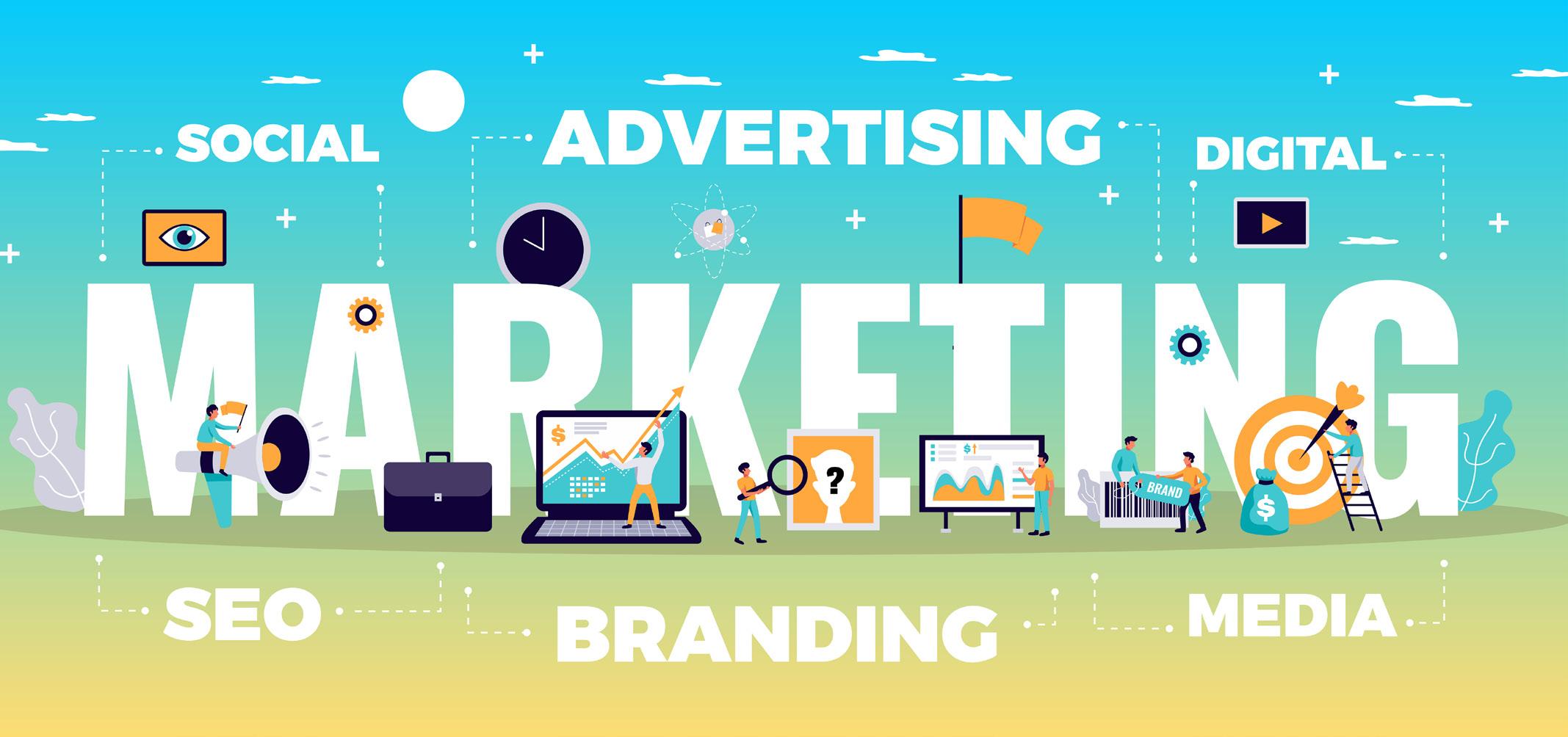
Consumers are bombarded with advertisements from every direction, whether on the internet, in the streets, or on television. These ads are following us like a shadow! But, with so much noise, how can businesses successfully break through and reach their target audience? The answer lies in a powerful element operating behind the scenes: Adtech.
AdTech, short for advertisement technology, is an extensive collection of tools and platforms that automate, target, and analyze the digital advertising process. The process helps businesses and brands put their messages in front of those who need them, resulting in increased growth and success. AdTech is helping companies find ways to connect with people by combining digital advertising technology with

strategic marketing efforts, which ultimately results in enhanced brand presence and a higher ROI (return on investment).
Traditional advertising methods are increasingly being replaced by digital formats. Brands are using digital platforms to reach targeted audiences more effectively. This shift pattern is all because of the humongous popularity of social media platforms, which have become the major channel for advertisers. Sites like Facebook, Instagram, Twitter, and TikTok offer advanced advertising options that are supported by sophisticated tools for audience targeting, engagement tracking, and performance measurement.

Adtech enables advertisers and agencies to efficiently target and reach their desired audiences through various automated platforms, such as Demand-Side Platforms (DSPs), Supply-Side Platforms (SSPs), and Data Management Platforms (DMPs).
DSPs facilitate the buying of ad impressions across various publisher sites. This automation simplifies the process of buying ad space, ensuring that ads reach the right audience at the right time. Similarly, SSPs help publishers manage and sell their ad inventory more efficiently. By connecting to multiple ad exchanges, SSPs ensure that publishers can maximise their revenue by selling ad space to the highest bidder. DMPs collect, analyse, and organise vast amounts of data from various sources, providing invaluable insights into audience behaviour and preferences. This data is crucial for creating targeted and personalised ad campaigns, which are among the most significant advantages of adtech. By utilising the data from DMPs and integrating it with AI and machine learning algorithms, brands can create ads that resonate deeply with their audience, enhancing engagement and conversion rates. Additionally, programmatic advertising is another cornerstone of Adtech, which uses algorithms to buy and sell ad space in real time, streamlining the entire process and eliminating the need for manual negotiations.
AdTech also provides brands with real-time analytics and insights, enabling them to monitor the performance of their ad campaigns continuously. These insights allow for immediate adjustments and optimizations, ensuring that ad spend is used effectively. The ability to track key metrics such as click-through rates, conversion rates, and return on ad spend (ROAS) provides a clear picture of campaign success and areas for improvement.
The AdTech industry has witnessed a massive upsurge in recent years, fueled by the proliferation of digital channels and the increasing adoption of programmatic advertising. If we look at the market analytics, we see a drastic advancement. In 2016, the
market size was approximately USD 56 billion, projected to reach about USD 263 billion by 2024. Experts believe these projections will only see an upward shift, and the global AdTech market will reach USD 2,461 billion by 2032. The rising trend of mobile advertising, video consumption and data-driven targeting will fuel this growth. A large part of the global AdTech market is dominated by retail and consumer goods brands.. The competition in this industry is intense, as companies are constantly competing for market share. Firms need to stay updated on consumer behavior, as key players like Google, Amazon, Meta, and Criteo are leaving no stone unturned to stay ahead in this sector.
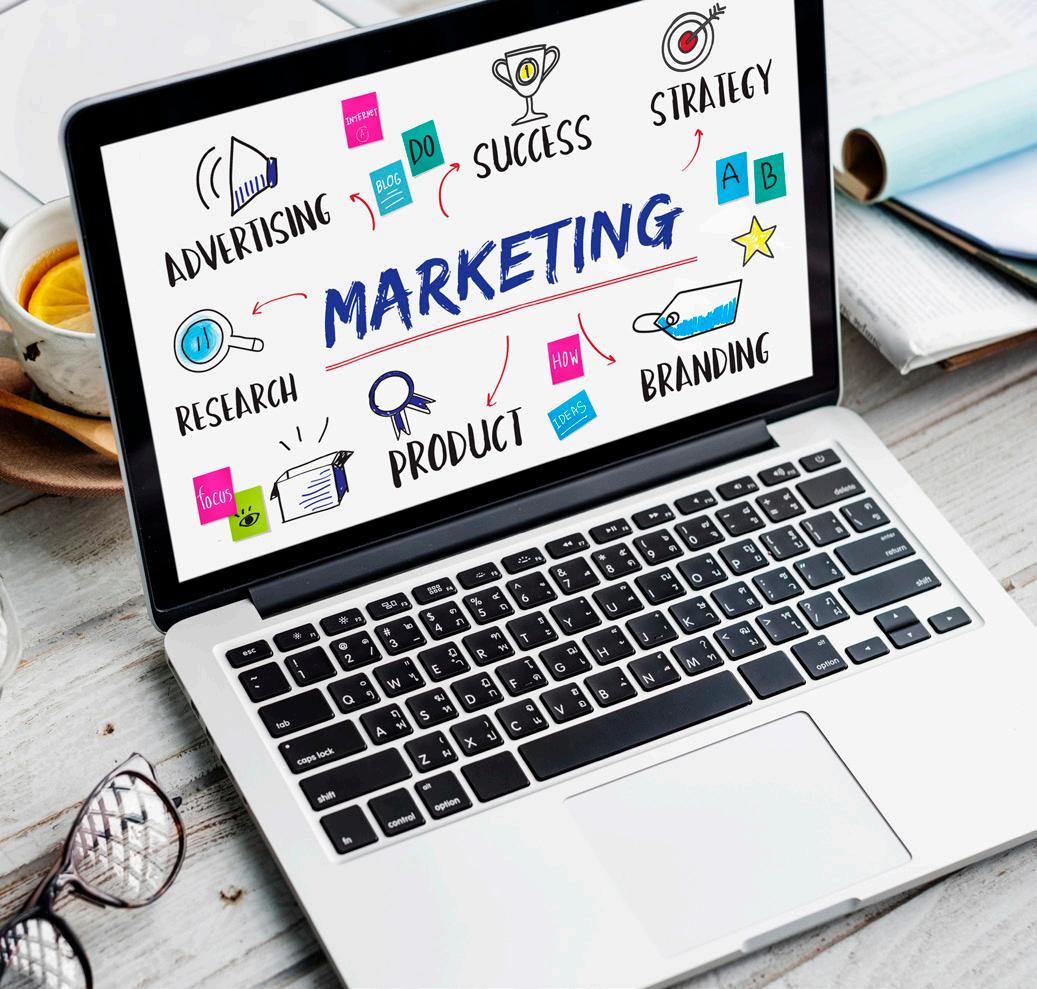



Adapting to constant changes in the AdTech ecosystem: Looking ahead, a lot of trends are going to shape the AdTech industry’s operations. Artificial intelligence and machine learning will continue to enhance AdTech capabilities, leading to improved targeting, customization, and automation of Ad campaigns. As data privacy policies are becoming more stringent, AdTech companies are developing strategies to ensure compliance while still providing effective advertising, including developments in data anonymization & safe data management techniques. Blockchain technology is also expected to increase accountability and transparency in the ad supply chain, solving issues like ad fraud and ensuring that ad spend is spent wisely. Additionally, augmented reality (AR) and virtual reality (VR) offer new and exciting ways for brands to engage with their audiences, and Ad Tech will play a crucial role in integrating these immersive technologies into advertising strategies. AdTech is undeniably a game-changer for modern brands and businesses by empowering them to connect with their audiences more effectively and efficiently than ever before.

- Blog by Madhulika Pandey
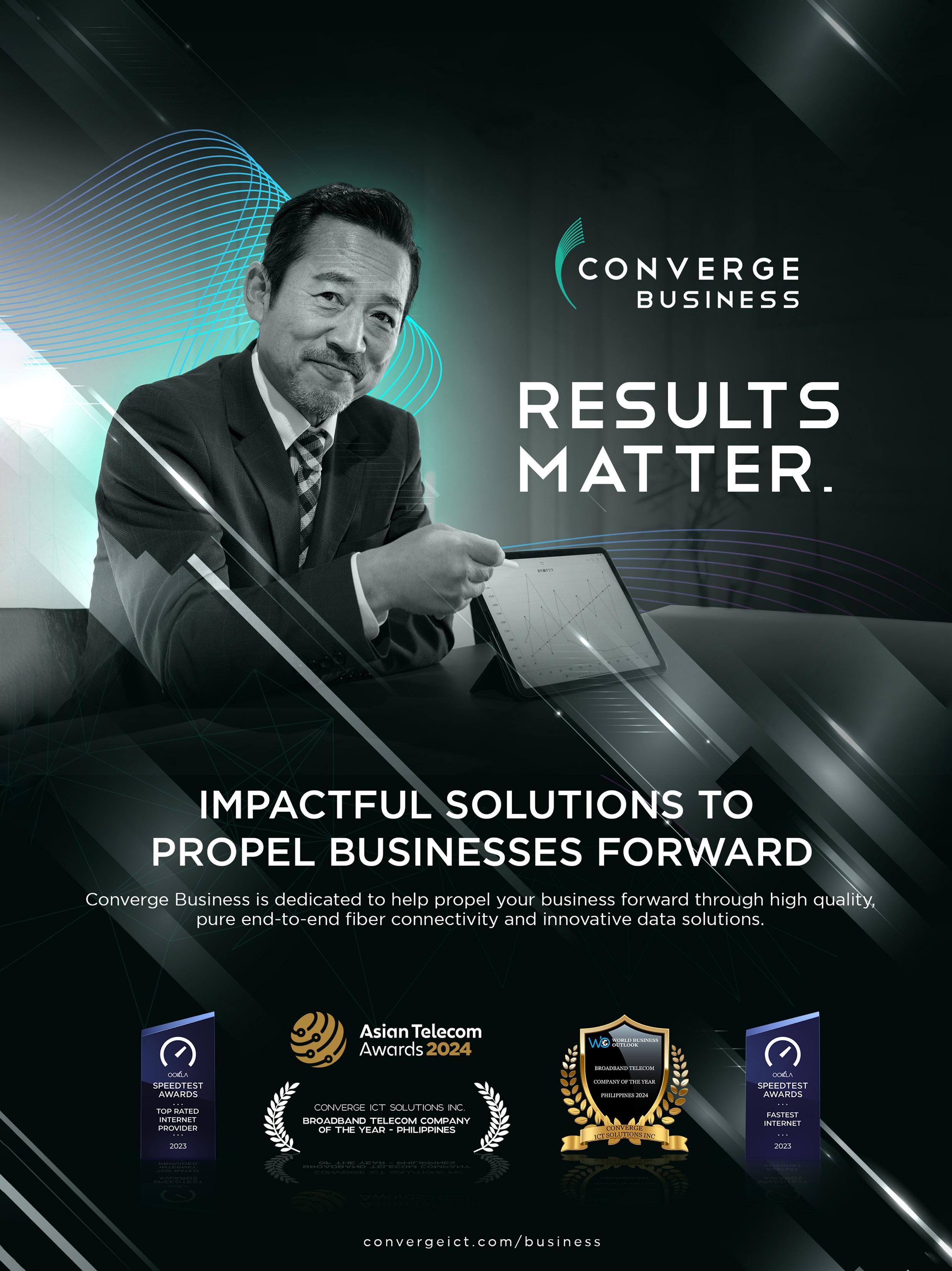


You might have heard the term Generation Alpha a lot lately and the significant changes that they are driving in the marketing standards. Allow me to explain this latest wave of Gen Alpha to those who are unaware of it. After Generation Z, we call the cohort born between 2010 and 2024 Generation Alpha, which will be the initial generation to be raised exclusively in the 21st century. By the time they are all born in 2025, we expect Gen Alpha to be the largest and most diverse generation in history, with an estimated population of over 2 billion; eclipsing the Baby Boomer (1946-1964) generation.
Thomas Jefferson said, “Every generation needs a new revolution,” which seems to be taken seriously by this generation in all aspects. This has not only impacted our way of thinking but has also led to a drastic change in consumer choices today.
Unlike their millennial parents, Gen Alpha has a more convincing strategy of being chauffeured to stores. Knowing this, brands have widened their demographics in a market where everything is for everyone. Technology plays a bigger part in Gen A’s early experiences and is ingrained in their lifestyle and education. This generation is more diverse, inclusive, and environmentally conscious than their predecessors.
Born in a time when smartphones, tablets, and other digital devices were already an integral part of life, Gen Alpha displays remarkable adaptability and ease with new technology. They are familiar with ideas like augmented reality (AR), virtual reality (VR), and artificial
intelligence (AI), and they frequently use them for both fun and learning.
Embracing green horizons
They have been exposed from an early age to the issues of climate change and the adoption of sustainable practices in the media and educational systems. This has enabled them to choose products that promote sustainability and show true empathy for the predicament of the environment.
Embracing the entrepreneurial spirit
Despite their young age, Gen Alpha is displaying traits of creativity, innovation, and independence, setting the stage for a future where entrepreneurship is prevalent and valued. Their eagerness to explore new ideas, coupled with their digital fluency, positions them well to become future innovators and changemakers. Encouraging and nurturing this entrepreneurial spirit within Gen Alpha can pave the way for a generation of young leaders who are equipped to drive forward progress and shape the future business landscape.

Building Bridges with inclusivity and equality
Gen Alpha sets a progressive tone by promoting a culture of acceptance and respect for all. Their commitment to equality not only forms their worldview but also opens the door for a more peaceful and accepting international society.
Playful Pathways: Levelling up engagement
Gamification has brought a drastic change in the learning experience of these young learners. Through this intentional design, it creates a dynamic and engaging environment that fosters not only participation but also meaningful learning experiences. This innovative approach aligns with contemporary educational trends, promising to cultivate curiosity, creativity, and critical thinking skills in the young minds of Generation Alpha.
Bloom and Thrive: Maintaining a healthy lifestyle
Generation Alpha is becoming increasingly conscious of mental health issues; 59% already recognise their significance, as per a report by a private agency. Their



increasing consciousness indicates that they will take an active role in promoting and neutralising mental health.
Parenting naturally causes adults to reassess their priorities concerning their children. Gen Alpha mimic their parents’ purchasing behaviour to some extent. Family expenses are influenced by their requirements, interests, and preferences. Resources for education, entertainment, food preferences, and lifestyle decisions are a few examples. Marketers must understand that even if Gen Alpha isn’t their target audience right now, they are setting the stage for future brand preferences and loyalty.
These attitudes, interests, and expectations will impact consumer behaviour and the labour market as Gen Alpha ages and enters the workforce. Companies will put themselves in a better position for success if they recognise them and make adjustments. To be relevant in the market in the long run, one must have an innovative mindset. Their relevance to marketers is highlighted by the enormous magnitude of their demographic. As kids get older, Gen Alpha will have a considerably greater market representation than their ancestors.
Due to their early exposure, Gen Alpha is positioned to be significant early adopters who would influence the development and direction of digital products. They are an essential focus for tech marketers because their choices will determine the path of research and growth for tech enterprises.
Future-Proofing Retail: Strategies for Engaging Gen Alpha Consumers
• Crafting a Purposeful Path
Given that Generation Alpha is socially conscious, brands must demonstrate strong, unambiguous principles. This motivates individuals to embrace
various business models that place a premium on social responsibility, ethics, and sustainability. Brands can advance and establish credibility in the market by gaining the trust of their customers. Because the generation is so young, making an early impression might result in brand devotion that lasts a lifetime.
• Parental Influence
When it comes to influencing parents’ purchasing decisions, children are crucial. The marketing plan for a company should take into account the parents’ values and tastes in addition to focusing on this younger demographic. Developing an engaging message for Generation Alpha and their parents while taking into account the family dynamic might result in a more comprehensive and successful marketing plan.
• Level up your Marketing Strategy
Social media is becoming immensely popular as a tool for public communication. With reports of over eight hours of watch time on platforms like YouTube, Instagram and TikTok, brands need to prioritize social media marketing even more. To get people to notice what they’re offering, marketers need to make sure it appears attractive and can compete with the active, chaotic platforms already in place.
• Influencer Power-Ups
Since peer opinions are so important for teenagers, influencer marketing can serve as a bridge to connect with Gen Alpha. Working with influencers in contemporary age ranges can aid in better communication of the brand’s message. Gamification techniques can also draw in the ever-hyperactive Gen Alphas. Incorporating interactive features has proven to be highly effective in Gen Alpha education; therefore, applying these strategies to marketing can likewise increase engagement.
Thoughts
Analysing the distinct elements affecting Generation Alpha’s purchase decisions is essential as we explore further into understanding their buying behaviours. Convenience, sustainability, and experience

consumerism are strongly favoured by Generation Alpha, who was reared by tech-savvy parents and grew up in a digital environment where a wide range of goods and services were available from a screen. Businesses can effectively modify their marketing efforts to resonate with this rising group by recognising and accommodating these specific interests. In the ever-changing consumer market, embracing a forward-thinking strategy that is in line with the values and expectations of Generation Alpha will be essential to building effective relationships and achieving desired results.
- Blog by Tamanna Sheikh





In today’s ever-changing global marketplace, businesses must be prepared to navigate through economic turbulence with agility and adaptability. Fluctuations in consumer demand, shifts in trade policies, and geopolitical tensions can all contribute to a volatile economic environment. To thrive in such conditions, companies must remain nimble, continuously reassess their strategies, and swiftly adapt to emerging challenges and opportunities.
One of the most effective strategies for mitigating risk in a volatile economy is diversifying revenue streams. By expanding into new markets, introducing innovative products or services, or exploring alternative business models, companies can reduce their reliance on a single source of income. This diversification not only provides a buffer against economic downturns in a
particular sector but also opens up new avenues for growth and profitability.
During times of economic uncertainty, it becomes crucial for businesses to optimize their operations and prioritize cost management. It may involve streamlining processes, leveraging technology to enhance efficiency, or reevaluating expenses to identify areas for potential cost savings. By maintaining a lean and cost-effective operational structure, companies can better weather economic storms and position themselves for longterm sustainability.
A motivated and engaged workforce is a powerful asset for any business, especially in challenging economic times. Investing in employee development, implementing recognition programs in the workplace, and fostering a culture of collaboration and innovation can help build a resilient and adaptable team. When employees feel valued and empowered, they are more likely to contribute their best efforts, driving productivity and helping the organization navigate through turbulent periods.
In a globalized economy, supply chain disruptions can have severe consequences for businesses. To mitigate this risk, companies should prioritize the development of robust supply chain and logistics strategies. It may involve diversifying suppliers, establishing contingency plans for disruptions, and leveraging technology to enhance supply chain visibility and


efficiency. By fortifying their supply chains, businesses can better withstand economic shocks and maintain uninterrupted operations.
The pace of digital transformation has accelerated in recent years and businesses that fail to adapt risk falling behind. Embracing digital technologies, such as cloud computing, artificial intelligence, and data analytics, can provide businesses with a competitive edge in a volatile economy. These technologies can streamline operations, enhance customer experiences, and unlock new revenue streams, positioning companies for longterm success in an ever-evolving digital landscape.
In times of economic uncertainty, strategic partnerships and collaborations can be invaluable. By joining forces with complementary businesses, companies can pool resources, share risks, and leverage collective expertise. These partnerships can open up new market opportunities, facilitate knowledge sharing, and foster
innovation, ultimately strengthening the resilience of all parties involved.
While it’s essential to respond swiftly to short-term economic fluctuations, businesses must also maintain a long-term perspective. It involves continually investing in research and development, exploring new growth opportunities, and cultivating a culture of innovation. By striking a balance between addressing immediate challenges and positioning themselves for future success, companies can navigate through volatile economic conditions while laying the foundation for sustained growth and profitability.
Navigating a volatile global economy requires a multifaceted approach that combines agility, adaptability, and strategic foresight. By embracing these strategies, businesses can not only weather economic storms but also emerge stronger, more resilient, and better positioned to capitalize on emerging opportunities in an ever-changing marketplace.
Data loss, whether brought upon by an accident or by a security breach, can be a nightmare for any company. Losing your data means losing access to highly sensitive information, which in turn can greatly inconvenience your business as well as put your customers at risk while their data is in your system.
In addition, devastating data loss can cost you a hefty sum just to repair the damages caused by a wideranging incident. It also goes without saying that every hour lost to business interruption due to data loss can cause heavy bleeding to the business.
Knowing that, your company shouldn’t wait until the last minute to properly protect and back up its precious data assets. Here are some practical measures that you can look into to prevent your company from suffering devastating data loss:
Common causes of data loss include human error and software corruption, both of which can happen at any time. If you’re caught off guard with no alternatives whatsoever, then you’ll be setting yourself up for a headache once you find out the damages these said mishaps have caused your data.


That said, you’ll want to prioritise backing up your existing data and investing in dedicated recovery and back-up solutions for enterprises. In case anything does happen to your main server, it won’t be hard for your company to recover critical data and to continue to use it without friction.
While there are many ways to go about backing up your data, utilising a back-up server is the most recommended solution, as it covers various points of your company’s digital infrastructure, from databases and applications to system files and user data. In such cases, you can rely on HPE servers like those in the HPE ProLiant line to house your back-up data and ensure that it remains safely stored.
Another option would be to use cloud storage back-ups and to pay for a subscription for cloud infrastructure as a service. Cloud storage back-up is often considered the ideal for small businesses and start-ups thanks to their low cost, flexibility, and scalability. Whatever it is you choose, don’t be remiss in making sure you have your business’s data assets backed up somewhere.
With everyone focused on digital platforms, it’s easy to forget that the hardware that runs them is just as


important. Since they comprise tangible equipment, hardware components are prone to risks such as breakage, theft, and destruction due to fire or other natural disasters. Of course, if they are damaged to the point of being irreparable, then all data inside them is essentially lost as well.
Hence, make sure that your company hardware— especially major components like servers—are kept in secure locations that are waterproof and fireproof. Make use of circuit breakers as well to protect your hardware from malfunctioning in case of a power outage.
Anti-theft measures, such as security cameras or alarms that sound out if a device is taken out of the premises without authorisation, can also help ensure that your hardware—and in turn, your data—remains safe and accessible.
Your employees constantly interact with your company’s data and thus have access to modify, delete, organise, and archive it. If they don’t have the right training to handle sensitive data assets, your company may be extra susceptible to human error—which, in turn, can

lead to devastating data loss. Untrained personnel can also be a liability when it comes to security breaches, especially if they aren’t equipped to spot scams or phishing tactics.
Always emphasise among your employees the important role they play in ensuring your company’s data security. To that end, aim to provide ample staff training on proper software use, data retrieval methods, and how to avoid being deceived by scams that can compromise your company data. Highlight the importance of proper confirmation during data or access turnover to make sure that any sensitive information only goes through the hands of authorised personnel.
Ransomware is a common form of cyberattack in which the criminal holds your data hostage until you pay up their demanded sum. They do this by hacking into your system and taking over access, essentially locking you out of your own files.
Such forms of data loss can be prevented if you have strict enough security measures put in place. These should include firewalls, antivirus software, and encrypted connections, among others. You should also

be appropriately restrictive over access controls and at which level an employee needs to be to have access to certain tiers of data.
You can also do a lot to prevent malfunctions that may destroy your data by ensuring that the programs you’re using are always up-to-date, with the latest upgrades and security patches onboarded in a timely fashion.
Have your IT team regularly monitor whether new versions of the software used in the company are available, and check if licences and software drivers are properly updated. This will ensure that the programs you’re using are stable and secure when you need them to be.
For another safety net, your company might want to

look into adopting data loss prevention (DLP) software that can keep your data secure and block out potential cyberattacks. Contemporary DLP solutions come with a wealth of tools, such as anti-malware systems, cloud storage, endpoint protection, and more. Choose a solution that fits your budget, size, and business type to give you full peace of mind over the status of your data.
Data security should always be a top priority for the modern, digital-forward business, especially the type that regularly handles sensitive customer information. Your effort to protect your data assets also goes a long way in protecting your customers’ well-being, the longevity of your business operations, and your reputation as a trustworthy brand. Use the tips above to shield your company from a data loss disaster and to ensure your ability to serve your customers and clients without interruption.





Energy storage is no longer a distant goal but rather a fast-approaching reality. Breakthroughs in batteries and grid solutions are bringing in a new energy framework that promises a brighter, cleaner, and more efficient future. With the shift towards renewable energy sources like wind and solar, which are inherently intermittent, advanced energy storage systems have become vital. Battery and grid technology breakthroughs promise to revolutionise how we store and use energy, playing a crucial role in modern energy systems by bridging the gap between energy supply and demand. It ensures a steady and reliable power supply, even when renewable sources are not producing electricity. Traditional energy storage solutions, such as pumped hydro and conventional batteries, have laid the groundwork, but innovations are pushing the boundaries of what’s possible.
Technological advancements in battery technology are driving the energy storage market. Innovations such as solid-state batteries, lithium-sulphur batteries, and flow batteries are enhancing energy density and lifespan, making energy storage systems more efficient and cost-effective.
Solid-state batteries are at the forefront of nextgeneration energy storage. These batteries employ solid electrolytes instead of liquid ones like standard lithiumion batteries do, which offer several advantages, such as higher energy density, which helps to store more energy in the same amount of space. It offers improved safety as solid electrolytes prevent the risk of leaks and fires. These batteries are designed to provide longevity as they can endure more charge-discharge cycles, which ultimately enhances their life span. Companies like Toyota and QuantumScape are leading the charge in developing commercial solid-state batteries, which could significantly impact electric vehicles (EVs) and portable electronics.
The energy storage sector saw a significant leap with the invention of flow batteries. Unlike conventional batteries, flow batteries store energy in liquid electrolytes
contained in external tanks. This design allows for easy scalability by simply increasing the tank size. They are particularly suited for grid storage applications due to their long cycle life and ability to maintain stable capacity over time. Vanadium redox flow batteries offer a scalable solution for large-scale energy storage. Researchers at the Massachusetts Institute of Technology (MIT) have developed a modelling framework to help speed up the development of this variety for large-scale, long-duration power storage.



The modernization of electric grids, including the development of smart grids and decentralised energy storage systems, is another major trend. Smart grids use digital technology to enhance the reliability, efficiency, and sustainability of the electricity supply, whereas decentralised energy storage involves placing storage systems closer to the point of consumption, reducing transmission losses, and improving grid stability. Home battery systems like the Tesla Powerwall and Sonnen’s ecoLinx enable homeowners to store solar energy generated during the day for use at night, contributing to a more resilient and sustainable grid. Systems like Net Metering allow the users to contribute electricity from solar to the grid. This also enables a new source of income for the general public.


Major investments in grid modernization projects are coming in from governments worldwide. For instance, the U.S. Department of Energy announced in 2023 that it has allocated 13 billion dollars for grid modernization initiatives, which include the integration of advanced energy storage solutions. Similarly, in 2022, the European Commission announced its plan to invest USD 633 billion in the European electricity grid by 2030 as a part of the EU action plan. Following suit, major Asian economies have come up with initiatives to enhance the smart grid technology. China plans to invest USD 442 billion by 2025 towards the expansion of the country’s electric grids. These investments and policies are expected to shape and influence the market, promoting a more sustainable way of utilising energy by reducing the dependence on fossil fuels.
The market for energy storage is expanding and evolving at a rate never seen before, fueled by positive government laws, innovations in battery technology, and the growing need for the adoption of renewable energy sources. Global energy storage installations are projected to reach 1,095 gigawatt-hours by 2030, according to BloombergNEF, as a result of the growing use of renewable energy and declining battery costs. In terms of transportation as well, the rapid growth in demand for electric vehicles is also fueling the demand for energy storage solutions. The International Energy Agency (IEA) has released data suggesting that by 2030, there will be 145 million electric vehicles on the road.
The need for safe and reliable battery technologies will rise considerably as more EVs hit the road.
The energy storage sector is also experiencing a boom in investments, primarily towards the development of new battery technologies and large-scale storage systems through research and development. To launch largescale storage projects, major corporations like Tesla, LG Chem, and Siemens are making huge investments in energy storage technology and partnering with utilities and renewable energy providers. These collaborations are very important for driving innovation and scaling up production. Currently, North America and Europe are leading the energy storage markets, while APAC, Latin America, and Africa are following the path and witnessing significant growth. These regions are mainly inclined towards investing in renewable energy projects. China, in particular, is expected to dominate the energy storage markets in Asia due to its ambitious energy targets and substantial investments in battery manufacturing capabilities. These advancements are converging to create a more resilient, efficient, and sustainable energy ecosystem. The transition to a lowcarbon future relies on our ability to store and manage energy effectively, making these innovations not just breakthroughs but necessities. With each breakthrough, we move closer to a future where clean, reliable energy is accessible to all, ensuring a sustainable and prosperous world for generations to come.
- Blog by Madhulika Pandey



